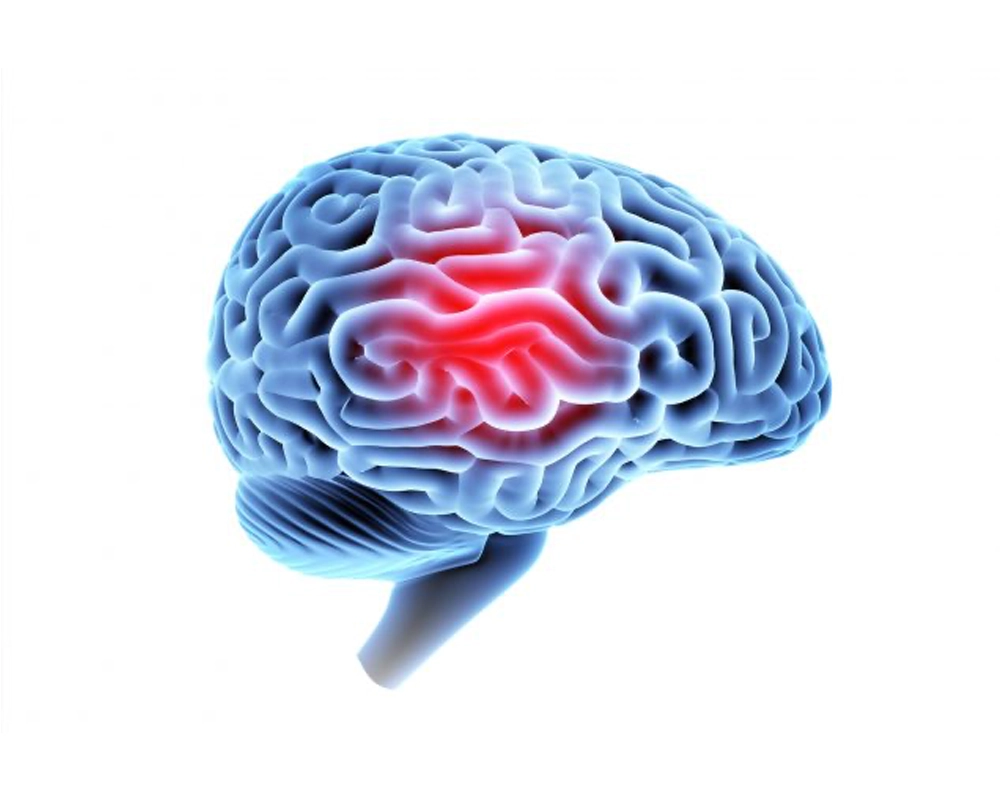From prenatal development through to childhood and adolescence, our brains undergo rapid changes which shape much of our lifelong mental health and cognitive ability.
Genetics certainly plays a significant role in this process, but research has shown that environmental factors also have a profound influence.
Here, we’ll explore how a broad range of lifestyle variables — nutrition, exercise, stress, trauma and traumatic brain injury (TBI), sleep, mental activity, and social interactions — can affect early brain development and define our cognitive health for a lifetime.

A summary of this blog
I’ve covered a lot in this article, with breakdowns of 3–4 cognitive phenomena for eight lifestyle factors which affect how our brains develop while we’re young. So here, in a simplified list form, is a summary of all of those phenomena.
Click or tap any one of the eight lifestyle factors to scroll down to my more detailed explanations of each.
- Nutrition and brain health: good nutrients include omega-3 fatty acids, iron, iodine, and vitamins, whilst poor nutrition often entails saturated fats, sugar, and preservatives
- Exercise and brain health: physical activity can promote neurogenesis, synaptic plasticity, growth factors, and cognitive performance.
- Stress and brain health: early in life, stress can contribute to impaired neurogenesis, disrupted neural circuitry, and an increased risk of mental disorders.
- Trauma and brain health: experiencing traumatic things when young has been shown to cause structural and functional changes in the brain, as well as cognitive deficits, emotional dysregulation, and mental health disorders.
- Traumatic brain injury (TBI) and brain health: physical trauma to the head can disrupt neurodevelopmental processes and cause behavioral problems and long-term cognitive decline.
- Sleep and brain health: sufficient good-quality sleep helps with memory consolidation, brain maintenance (including neural repairs and elimination of waste products), and lower risks of cognitive deficits and attention problems.
- Mental activity and brain health: mentally-stimulating activities can strengthen neuroplasticity and cognitive reserve while reducing one’s risk of cognitive decline and dementia.
- Social interactions and brain health: socializing
helps shape the brain’s social circuitry, develop emotional regulation, and strengthen our cognitive and socioemotional capacity.
Nutrition and brain health

Proper nutrition during early brain development is crucial for optimal cognitive function later in life. Essential nutrients play a vital role in neurodevelopment and neuroplasticity. Here are some key nutrients and their effects on our minds:
Omega-3 Fatty Acids: DHA, a type of Omega-3, is a major structural component of the brain. It is crucial for brain development in early childhood and supports cognitive function throughout life.
Iron: produces hemoglobin, a protein in red blood cells which supplies oxygen to the brain. Iron deficiency in early childhood can lead to impaired cognitive, motor, and social-emotional development.
Iodine: critical for the synthesis of thyroid hormones, which are involved in the growth and development of the brain during early childhood. Iodine deficiency can lead to cognitive impairments.
Vitamins: certain vitamins — particularly B-vitamins and vitamins A, C, and D — are involved in the creation of neurotransmitters, the formation and maintenance of neural connections, and the protection of brain cells from damage.
Poor nutrition, naturally, has adverse effects on the brain. Diets high in processed foods with lots of saturated fat, sugar, and preservatives can negatively impact cognitive development and function.
High Saturated Fat: a common contributor to cognitive impairment and memory loss. Can also increase the risk of neurodegenerative diseases later in life.
High Sugar: can impair cognitive function and memory, and lead to inflammation in the brain, which can negatively impact neuropsychological health.
Preservatives: certain food additives and preservatives have been linked to behavioral problems and hyperactivity in children. They may also weaken cognitive function.
Overall Poor Nutrition: a diet lacking in essential nutrients may lead to malnutrition, which can have long-lasting effects on cognitive development, increasing the risk of mental disorders.
A balanced diet rich in essential nutrients supports healthy brain development and cognitive function, while a diet high in processed foods and lacking in key nutrients can have significant negative effects on brain development. It is, therefore, very important to promote healthy eating habits from an early age.
Exercise and brain health

Physical activity has been shown to have a profoundly positive impact on brain health and mental capacity.
Neurogenesis: exercise promotes the creation of new neurons, also known as ‘neurogenesis’. A study by van Praag et al. (1999) found that running increased the number of new neurons in the hippocampus, a region of the brain where much of our learning and memory committal is managed.
Synaptic Plasticity: physical activity strengthens synaptic plasticity — that is, the degree to which our synapses (the connections between our neurons) can strengthen or weaken over time. This is key for learning and memory. Aerobic exercise has been known to improve synaptic plasticity in the hippocampus of developing brains.
Growth Factors: exercising stimulates the release of a protein called ‘brain-derived neurotrophic factor’ (BDNF), which increases the survival and growth of neurons. This was shown in a study by Neeper et al. (1995).
Cognitive Performance: regular physical activity has been associated with improved cognitive performance in children and adolescents. A review by Donnelly et al. (2016) found that physical fitness can positively impact academic achievement among young people.
Stress and brain health

Excessive or prolonged stress during early life can have detrimental effects on brain development and cognitive health, contributing to such issues as:
Impaired Neurogenesis: chronic stress can impair neurogenesis, the process of creating new neurons (brain cells). A study from Luby et al. (2013) posits that children who experienced high levels of stress had less gray matter in certain areas of the brain — a common factor of impaired neurogenesis.
Disrupted Neural Circuitry: stress can also disrupt our neural circuitry, thus limiting cognitive function and emotional regulation. From a study by Teicher et al. (2016), we know that children who endure stress later encounter alterations in the connectivity of their brain networks, increasing the risk of anxiety and depression.
Increased Risk of Mental Disorders: the risk of developing mental disorders such as anxiety and depression has been shown to be increased by stress. A study by McLaughlin et al. (2010) notes that children who faced maltreatment — a source of severe stress — were likelier to experience anxiety and depression in adulthood.
Role of Supportive Elements: nurturing and supportive environments can help buffer the negative impact of stress on the developing brain. According to research by Sheridan et al. (2012), children who had supportive relationships with their parents were measurably more protected against the negative effects of stress on their neuropsychological health.
Trauma and brain health
Exposure to traumatic experiences early on life, such as abuse, neglect, or witnessing violence, can drastically hinder brain development.
Structural and Functional Changes: Adverse Childhood Experiences (ACEs) — a standardised set of stressful events defined by healthcare experts — have been known to correlate with functional and structural alterations of the brain. Teicher et al.’s 2016 study highlights that children who suffered maltreatment had reduced volume of the prefrontal cortex and corpus callosum, and increased activation of the amygdala.
Cognitive Deficits: traumatic experiences can cause deficits in cognitive capacity, as evidenced by Carrion et al.’s 2009 research, which demonstrates how children who experienced traumatizing stress whilst younger had lower IQ scores and poorer academic performance compared to their non-traumatized peers.
Emotional Dysregulation: this disorder can manifest as difficulties in managing emotions, increased emotional reactivity, and an inability to understand or recognize emotions. A study by Kim and Cicchetti (2010) found that children who experience maltreatment can find it challenging to regulate their emotions, leading to symptoms of depression and anxiety.
Mental Health Disorders: many adults who get diagnosed with mental health disorders like anxiety and post-traumatic stress disorder (PTSD) — including the ones represented in Green et al.’s 2010 study — experienced trauma during their childhood.
Traumatic brain injury (TBI) and brain health

Traumatic brain injury (TBI) resulting from a bump, blow, or jolt to the head can cause lasting damage to a person’s brain health.
Disruption of Neurodevelopmental Processes: in children, TBI can throttle neurodevelopmental processes, causing cognitive impairments, attention deficits, and behavioral problems. A study by Anderson et al. (2017) discovered that, compared to children who hadn’t experienced TBI, young people who had reported strained cognitive capacity, including lower IQ scores and difficulties with learning and remembering.
Behavioral Problems: traumatic brain injuries can also make young people develop behavioral issues, as was the case with the children acknowledged in Max et al.’s 1998 study, which found that TBIs could cause attention-deficit/hyperactivity disorder (ADHD) and conduct disorders at a higher rate than among children who hadn’t endured such physical traumas.
Risk of Long-Term Cognitive Decline: repeated head injuries in sports or other activities can increase the risk of long-term cognitive decline, including chronic traumatic encephalopathy (CTE). Research conducted by McKee et al. in 2013 details how individuals who have experienced repeated TBIs, including athletes and military veterans, have a higher risk of developing CTE: a progressive degenerative disease of the brain associated with memory loss, confusion, impaired judgment, and, eventually, progressive dementia.
Sleep and brain health

Adequate good-quality sleep is vital for optimal brain development and strong cognitive longevity. Here’s what sleep can do for you:
Memory Consolidation: during sleep, your brain consolidates your memories, which helps massively with learning. A 2004 study by Walker and Stickgold found that sleep — particularly rapid eye movement (REM) sleep — is one of the most important drivers of procedural memory consolidation, which is essentially what allows us to make things like mental arithmetic or motor skills ‘second nature’.
Natural Repair and Waste Elimination: sleep allows the brain to repair neural connections and eliminate ‘waste’ products through systems like the glymphatic system which, as described in a 2013 study by Xie et al., discards ‘metabolites’ — substances left over from metabolic processes which our bodies don’t use.
Cognitive Deficits and Attention Problems: insufficient or low-quality, oft-disrupted sleep during our younger years has been linked to cognitive deficits and attention problems. Through research by Dewald et al. (2010), we know that sleep disorders in children and adolescents are associated with poorer academic performance and reduced concentration.
Risk of Neurodevelopmental Disorders: poor-quality sleep can increase the risk of neurodevelopmental disorders. ADHD, for example, is cited as one such condition in a 2016 study by Gregory and Sadeh.
Mental activity and brain health

Engaging in mentally-stimulating activities like reading, brain teasers, and new skills/hobbies can nurture enhanced cognitive health throughout life — especially in early childhood.
Neuroplasticity: mental activity stimulates neuroplasticity — that’s the brain’s ability to form and reorganize synaptic connections, which helps us learn new things and comprehend novel experiences. A study from Draganski et al. (2006) highlights how extensively learning abstract information can spark these positive life-changing cognitive restructures.
Cognitive Reserve: when you regularly enjoy mentally-enriching pastimes, you’re enhancing your cognitive reserve, which is one of the brain’s most resilient defenses against damage and decline. One study (Stern, 2009) documents how individuals with high cognitive reserve early in childhood are less likely to show clinical symptoms of neurodegenerative diseases such as Alzheimer’s.
Reduced Risk of Cognitive Decline and Dementia: frequent mental stimulation early in our lives lowers the likelihood that we’ll experience cognitive decline or develop dementia in our later years, according to a 2002 piece by Wilson et al.
Social interactions and brain health
Positive social interactions are crucial for vital for healthy brain development.
Shaping the Brain’s Social Circuitry: the social experiences we have early on in our lives shape the brain’s ‘social network’ (literally!), which includes the prefrontal cortex, amygdala, and anterior cingulate cortex — all parts of our brains responsible for social cognition. A study by Tottenham et al. (2010) found that children who grew up experiencing social deprivation developed their amygdalas (specifically responsible for processing social and emotional information) a little differently.
Emotional Regulation: social interactions affect our ability to manage and respond to emotional experiences. Gee et al. conducted a study in 2013 which identified that children who had secure attachments with their caregivers had better emotional regulation, as evidenced by their amygdala being less reactive to threatening stimuli.
Cognitive and Socioemotional Development: we’ve had neuroscientific proof that socializing supports cognitive and emotional development for decades, thanks to a 1978 study by Vygotsky. The research also emphasizes the psychological benefits we reap by learning through the social interactions we engage in.
Effects of Social Isolation or Neglect: on the flipside, social isolation or neglect during critical periods of development early in our lives can lead to long-term cognitive impairments and mental health problems. Research by Sheridan et al. published in 2012 explains how children who experienced social neglect were found to have alterations in the structure and function of their brains which contributed to cognitive issues and neuropsychological disorders
References
Cusick SE, Georgieff MK. The Role of Nutrition in Brain Development: The Golden Opportunity of the ‘First 1000 Days’. J Pediatr. 2016 Mar; 175:16-21.
Hillman CH, et al. The effect of acute treadmill walking on cognitive control and academic achievement in preadolescent children. Neuroscience. 2013 Jan 29; 159(3):1044-54.
Teicher MH, et al. Childhood maltreatment, altered limbic neurobiology, and substance use relapse severity via trauma-specific reductions in limbic gray matter volume. JAMA Psychiatry. 2010 Jul; 67(7): 794-801.
Teicher MH, Samson JA. Childhood Maltreatment and Psychopathology: A Case for Ecophenotypic Variants as Clinically and Neurobiologically Distinct Subtypes. Am J Psychiatry. 2017 Sep 1;174(9):876-885.
Montenigro PH, et al. Cumulative head impact exposure predicts later-life depression, apathy, executive dysfunction, and cognitive impairment in former high school and college football players. J Neurotrauma. 2014 Jan 1; 31(5): 468-479.
Paavonen EJ, et al. Sleep quality, duration, and behavioral problems during adolescence. Sleep. 2008 Aug; 31(8): 1087-1096.
Hsu DC, et al. The relation between cognitive activity and cognitive performance in older adults: results of the 2016 Alzheimer’s Disease Facts and Figures Special Report. J Gerontol B Psychol Sci Soc Sci. 2017 Sep 1; 72(5): 892-896.
Hostinar CE, et al. Early-life poverty, immune dysregulation, and adult chronic illness. Curr Dir Psychol Sci. 2016 Jun; 25(3): 172-177.
van Praag, H., Kempermann, G., & Gage, F. H. (1999). Running increases cell proliferation and neurogenesis in the adult mouse dentate gyrus. Nature Neuroscience, 2(3), 266–270.
Voss, M. W., Vivar, C., Kramer, A. F., & van Praag, H. (2013). Bridging animal and human models of exercise-induced brain plasticity. Trends in Cognitive Sciences, 17(10), 525–544.
Neeper, S. A., Gómez-Pinilla, F., Choi, J., & Cotman, C. W. (1995). Physical activity increases mRNA for brain-derived neurotrophic factor and nerve growth factor in rat brain. Brain Research, 726(1-2), 49–56.
Donnelly, J. E., Hillman, C. H., Castelli, D., Etnier, J. L., Lee, S., Tomporowski, P., … & Szabo-Reed, A. N. (2016). Physical activity, fitness, cognitive function, and academic achievement in children: a systematic review. Medicine & Science in Sports & Exercise, 48(6), 1197.
Falck, R. S., Davis, J. C., & Liu-Ambrose, T. (2017). What is the association between sedentary behaviour and cognitive function? A systematic review. British Journal of Sports Medicine, 51(10), 800–811.
Luby, J., Belden, A., Botteron, K., Marrus, N., Harms, M. P., Babb, C., … & Barch, D. (2013). The effects of poverty on childhood brain development: the mediating effect of caregiving and stressful life events. JAMA pediatrics, 167(12), 1135-1142.
Teicher, M. H., Samson, J. A., Anderson, C. M., & Ohashi, K. (2016). The effects of childhood maltreatment on brain structure, function and connectivity. Nature Reviews Neuroscience, 17(10), 652-666.
McLaughlin, K. A., Green, J. G., Gruber, M. J., Sampson, N. A., Zaslavsky, A. M., & Kessler, R. C. (2010). Childhood adversities and adult psychiatric disorders in the national comorbidity survey replication II: associations with persistence of DSM-IV disorders. Archives of general psychiatry, 67(2), 124-132.
Sheridan, M. A., Sarsour, K., Jutte, D., D’Esposito, M., & Boyce, W. T. (2012). The impact of social disparity on prefrontal function in childhood. PloS one, 7(4), e35744.
Teicher, M. H., Samson, J. A., Anderson, C. M., & Ohashi, K. (2016). The effects of childhood maltreatment on brain structure, function and connectivity. Nature Reviews Neuroscience, 17(10), 652-666.
Carrion, V. G., Weems, C. F., & Reiss, A. L. (2007). Stress predicts brain changes in children: a pilot longitudinal study on youth stress, posttraumatic stress disorder, and the hippocampus. Pediatrics, 119(3), 509-516.
Kim, J., & Cicchetti, D. (2010). Longitudinal pathways linking child maltreatment, emotion regulation, peer relations, and psychopathology. Journal of Child Psychology and Psychiatry, 51(6), 706-716.
Green, J. G., McLaughlin, K. A., Berglund, P. A., Gruber, M. J., Sampson, N. A., Zaslavsky, A. M., & Kessler, R. C. (2010). Childhood adversities and adult psychiatric disorders in the national comorbidity survey replication I: associations with first onset of DSM-IV disorders. Archives of general psychiatry, 67(2), 113-123.
Anderson, V., Catroppa, C., Morse, S., Haritou, F., & Rosenfeld, J. (2005). Functional plasticity or vulnerability after early brain injury?. Pediatrics, 116(6), 1374-1382.
Max, J. E., Robin, D. A., Lindgren, S. D., Smith, W. L., Sato, Y., Mattheis, P. J., … & Castillo, C. S. (1997). Traumatic brain injury in children and adolescents: psychiatric disorders at two years. Journal of the American Academy of Child & Adolescent Psychiatry, 36(9), 1278-1285.
McKee, A. C., Stern, R. A., Nowinski, C. J., Stein, T. D., Alvarez, V. E., Daneshvar, D. H., … & Cantu, R. C. (2013). The spectrum of disease in chronic traumatic encephalopathy. Brain, 136(1), 43-64.
Walker, M. P., & Stickgold, R. (2004). Sleep-dependent learning and memory consolidation. Neuron, 44(1), 121-133.
Xie, L., Kang, H., Xu, Q., Chen, M. J., Liao, Y., Thiyagarajan, M., … & Nedergaard, M. (2013). Sleep drives metabolite clearance from the adult brain. Science, 342(6156), 373-377.
Dewald, J. F., Meijer, A. M., Oort, F. J., Kerkhof, G. A., & Bögels, S. M. (2010). The influence of sleep quality, sleep duration and sleepiness on school performance in children and adolescents: A meta-analytic review. Sleep medicine reviews, 14(3), 179-189.
Gregory, A. M., & Sadeh, A. (2016). Annual Research Review: Sleep problems in childhood psychiatric disorders–a review of the latest science. Journal of Child Psychology and Psychiatry, 57(3), 296-317.
Draganski, B., Gaser, C., Kempermann, G., Kuhn, H. G., Winkler, J., Büchel, C., & May, A. (2006). Temporal and spatial dynamics of brain structure changes during extensive learning. The Journal of Neuroscience, 26(23), 6314-6317.
Stern, Y. (2009). Cognitive reserve. Neuropsychologia, 47(10), 2015-2028.
Wilson, R. S., Mendes De Leon, C. F., Barnes, L. L., Schneider, J. A., Bienias, J. L., Evans, D. A., & Bennett, D. A. (2002). Participation in cognitively stimulating activities and risk of incident Alzheimer disease. Jama, 287(6), 742-748.
Tottenham, N., Hare, T. A., Quinn, B. T., McCarry, T. W., Nurse, M., Gilhooly, T., … & Thomas, K. M. (2010). Prolonged institutional rearing is associated with atypically large amygdala volume and difficulties in emotion regulation. Developmental science, 13(1), 46-61.
Gee, D. G., Humphreys, K. L., Flannery, J., Goff, B., Telzer, E. H., Shapiro, M., … & Tottenham, N. (2013). A developmental shift from positive to negative connectivity in human amygdala–prefrontal circuitry. Journal of Neuroscience, 33(10), 4584-4593.
Vygotsky, L. S. (1978). Interaction between learning and development. Readings on the development of children, 23(3), 34-41.
Sheridan, M. A., Fox, N. A., Zeanah, C. H., McLaughlin, K. A., & Nelson, C. A. (2012). Variation in neural development as a result of exposure to institutionalization early in childhood. Proceedings of the National Academy of Sciences, 109(32), 12927-12932.

About The Author
Dean Sherzai, MD, PhD
Dr. Dean Sherzai is co-director of the Alzheimer’s Prevention Program at Loma Linda University. Dean trained in Neurology at Georgetown University School of Medicine, and completed fellowships in neurodegenerative diseases and dementia at the National Institutes of Health and UC San Diego. He also holds a PhD in Healthcare Leadership with a focus on community health from Andrews University.
Get more brain science direct to your email inbox
Sign up for the Brain Docs newsletter for weekly recipes, brain teasers, neuroscience facts, podcast updates, and more — for free!



